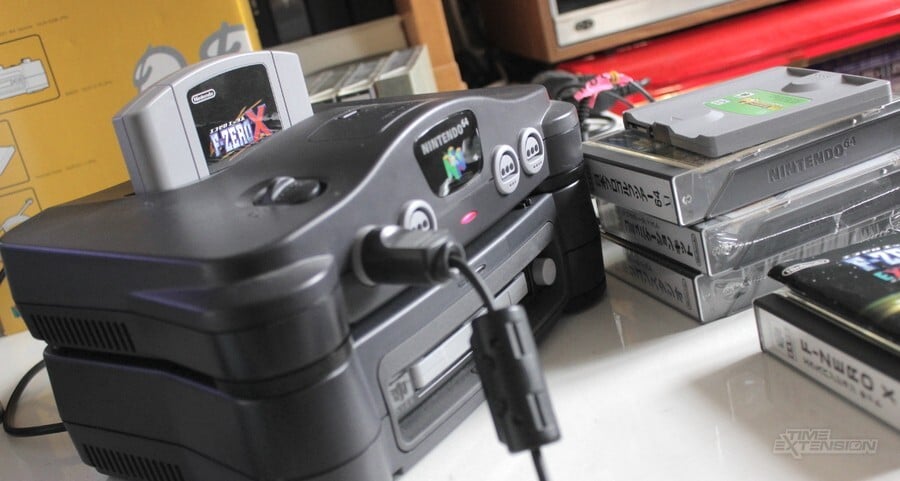
The N64 Disk Drive is one of Nintendo's most fascinating failures. Initially teased at the company's Shoshinkai event in November 1995, the peripheral took advantage of proprietary 64MB magnetic disks to expand the console's available storage with rewritable data as well as introducing other exciting features such as a real-time clock and network connectivity.
Once considered to be a key part of Nintendo's vision of the future of console gaming, it never became the groundbreaking success that many fans had hoped for, due to its various delays, limited library of games, unusual release method, and regional exclusivity. Originally slated to launch back in 1997 (with a North American release scheduled for the following year), the add-on only ever ended up being released in Japan in 1999, via a mandatory subscription service operated by Randnet (a joint venture between Nintendo and the human resource company Recruit). In the end, only 10 disks were ever published for the 64DD, with the vast majority of games that had been announced for the peripheral either being cancelled or released elsewhere on cartridge or CD.
Over the past year, we at Time Extension have been taking a closer look at the history of this failed Nintendo add-on, to try to uncover as much information about it as possible. We've spent countless hours poring over old magazines and websites and even enlisted the aid of the Japanese-to-English translator Liz Bushouse to help us translate a bunch of Japanese resources for the first time ever. This has provided us with an in-depth look at why the 64DD failed and what its legacy is today. Before we get started, though, we should probably talk a little bit about the N64 itself.
Cartridges VS. CD-ROMs
In August 1993, Nintendo and the computing company Silicon Graphics announced that they were working together on a new 64-bit games console. Codenamed "Project Reality", this was to be Nintendo's first-ever 3D machine and was reported to feature cutting-edge technology such as "the MIPS(r) Multimedia Engine" (a chip-set consisting of a 64-bit MIPS RISC microprocessor, a graphics co-processor chip and Application Specific Integrated Circuits (ASICs)).
The console was also surprisingly revealed to be taking advantage of cartridges as its primary storage format, at a time when most of Nintendo's competitors (such as Sony, 3DO, and Sega) were all making the switch over to CD-ROM. Inevitably, there was a lot of skepticism across the gaming industry about whether this gamble would pay off.
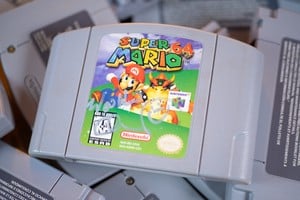
Tom Kalinske, the president of Sega of America, for instance, publicly criticized Nintendo's plan, highlighting the high cost of cartridges in Edge Magazine and claiming that certain consumers had started to consider the technology to be "old fashioned". Sony’s Phil Harrison, meanwhile, told Next Generation magazine, “If Nintendo sticks to its cartridge strategy it is not going to supply product with the same production value as you’ll see on the PlayStation”
In the April 1994 issue of Nintendo Magazine UK, the vice president of marketing at Nintendo of America Peter Main defended the company's decision to stick with cartridges, claiming: “The cartridge format is the only proven method. CD-ROM, at this stage of the game, is too slow and no other format has proven its worth. Furthermore, the new cartridge format will allow us to bring consumers the best in technology at a mass-market price." However, he revealed that Nintendo had designed Project Reality with a "CD-ROM accessory" in mind and that it was continuing to evaluate how it would proceed in the future.
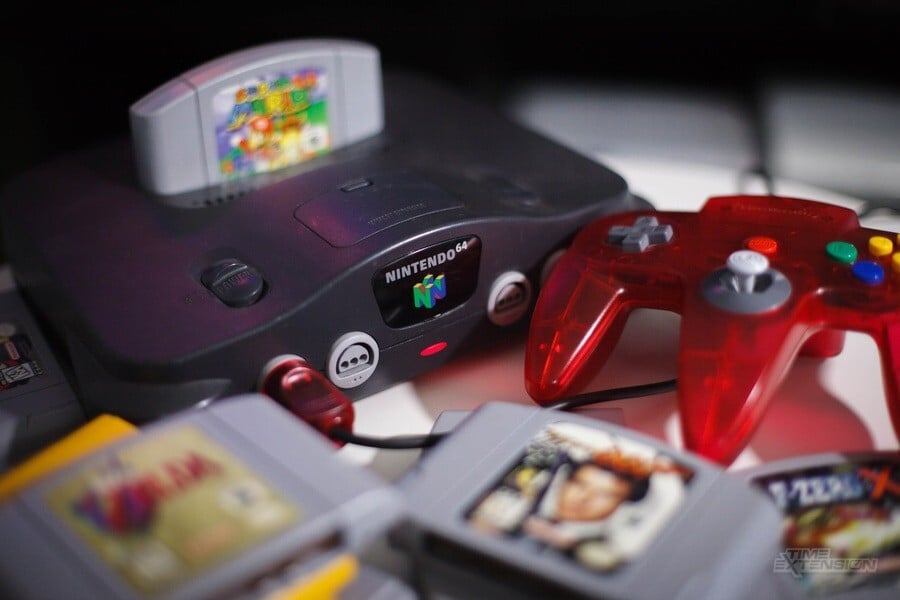
Later in the same year, the Nintendo of America chairman Howard Lincoln also appeared to corroborate this, suggesting to Billboard Magazine that Nintendo might eventually adapt to using CD-ROM for Project Reality: "Right now, cartridges offer faster access time and more speed of movement and characters than CDs. So, we’ll introduce our new hardware with cartridges. But eventually, these problems with CDs will be overcome. When this happens, you’ll see Nintendo using CD as the software storage medium for our 64-bit system."
All signs pointed to Nintendo eventually announcing a CD-ROM-based peripheral for the console, but then, at Shoshinkai 1995, Nintendo president Hiroshi Yamauchi took everyone by surprise by teasing the "bulky drive". This was a new add-on that used custom-designed 3 ¾-in, rewritable magnetic disks and was believed to be something of a middle ground between cartridge and CD. Yamauchi didn't reveal much about the device at the event but claimed that he planned to do a full reveal at next year's conference and that Zelda 64 would likely be a launch title for the add-on. He also mentioned that Nintendo had been holding talks with Enix too, in the hopes of convincing the publisher to bring Dragon Quest over to the add-on.
Understandably, given this lack of information, the next 12 months saw the press trying to dig up as much information as possible on this mysterious add-on, with reports surfacing that the Final Fantasy developer Square had formed a joint venture with Nintendo and the Justsystems to develop software for the add-on and that Rare was also among the peripheral's list of developers.
Final Fantasy VII & Shoshinkai '96
In the aftermath of these reports, people's imaginations inevitably went crazy picturing what the developers of Donkey Kong Country and Killer Instinct might be able to pull off with this new hardware, or what a 64-bit version of Final Fantasy might look like. But before they could get too excited, Square, famously jumped ship to Sony, shifting the development of Final Fantasy VII over to the PlayStation.
According to a Square spokesperson in Electronic Gaming Monthly, the decision was made due to the N64 being unable to hold all of the game's data, with the developer estimating that it would have taken more than 30 magnetic disks to store the same information as just two PlayStation discs. In a 2017 oral history on the Making of Final Fantasy VII in Polygon, Square USA vice president Shinichichiro Kajitani claimed that Square had previously tried to convince Nintendo to pursue a CD-ROM add-on to hopefully avoid running into these issues, but "Yamauchi-san at Nintendo basically refused to listen to any of it".
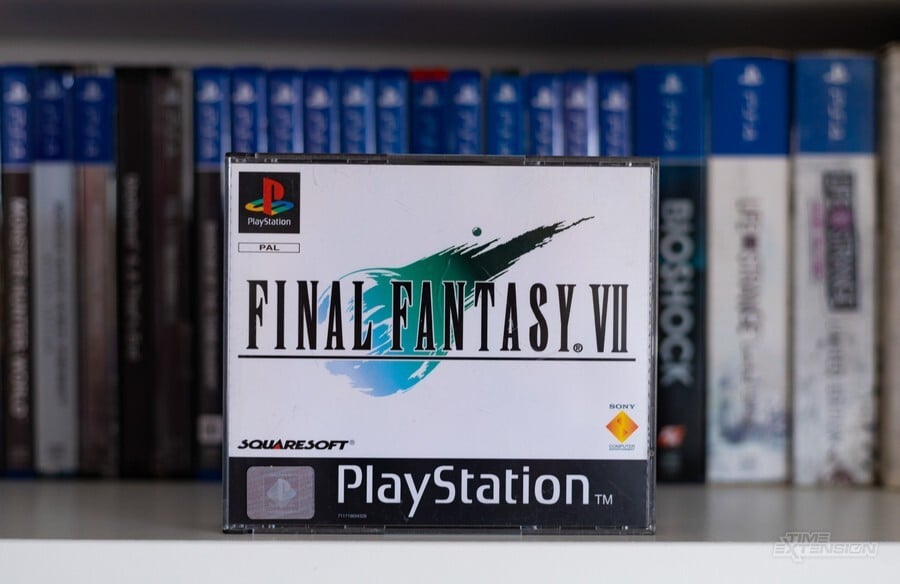
Square's departure was a public black eye for Nintendo, as it seemed to justify a lot of the criticism the company had been facing from its rivals over its decision not to adopt CD-ROMs. In the past, Square had been one of Nintendo's closest allies but now it was publicly discussing the limitations of its latest console and praising one of its biggest competitors. Unsurprisingly, Nintendo was furious, reportedly telling Square to "never come back" after its decision was made public.
Despite this dramatic split, Nintendo went ahead with its plans of announcing the "Bulky Drive" (now renamed to the 64DD) at Shoshinkai 1996. Nintendo gave players their first-ever look at the device, which was later revealed to be developed by Alps Electric, alongside a glimpse of its proprietary disks. There were even rumours that the device would feature a modem too, though exactly what this would do was still a mystery. Sadly, Zelda 64 wasn't playable on the show floor as many had anticipated (a trailer was shown instead), but those in attendance could experience a 64DD prototype of Super Mario 64 as well as have their picture taken and texture mapped onto a face on a screen to show off the rewritable nature of the hardware.
In an interview with N64.com, when questioned about the lack of playable games, Howard Lincoln told the reporter that Nintendo was initially not going to show anything running on the 64DD that year and that the choice to have Super Mario 64 was a "last-minute" decision to have "a game people recognize". In the same interview, he also avoided commenting on the recent news involving Square's defection and gave a rough timeline on when players could expect to get their hands on the machine.
Lincoln told the website at the time: "It's fair to say that 64DD will launch in Japan first in 1997, and of course, the key to the launch of the 64DD will be great software. The launch of 64DD will be similar to the launch of Nintendo 64, with a set date, promotion, and we'll be working with our retailers on distributing the hardware evenly across the country. We could pack in Zelda, but we haven't fully decided yet. We want to have at least a handful of titles out for its launch. We have our A team all around the world working on 64DD software right now."
Heading into 1997, Nintendo was still clearly confident about the add-on and believed it would only be a matter of time before people would be able to buy it. The following year, however, would throw up a bunch of challenges that forced the company to revise this timeline — the first of which involved another defection from one of Nintendo's leading publishers.
Dragon Quest, Software Issues, & Delays
In January 1997, Nintendo had to endure another embarrassing situation as Enix publicly announced that it was moving the development of the next Dragon Quest game from the 64DD over to the PlayStation. According to overseas reports (as covered by EGM), Enix opted to do this purely for "economic reasons", with the PlayStation simply offering the publisher the largest possible market share as well as the prospect of cheaper manufacturing costs.
Similar to the Final Fantasy news, this was another huge blow for the 64DD, especially as Yamauchi had specifically namechecked Dragon Quest when he first teased the device back in 1995. But in the April 4th, 1997 issue of Weekly Famitsu, the Dragon Quest creator Yuji Horii tried to downplay the significance of the announcement, claiming that he was still open to developing a new Dragon Quest game for the 64DD, should a decent idea present itself. Although, this never ended up happening.
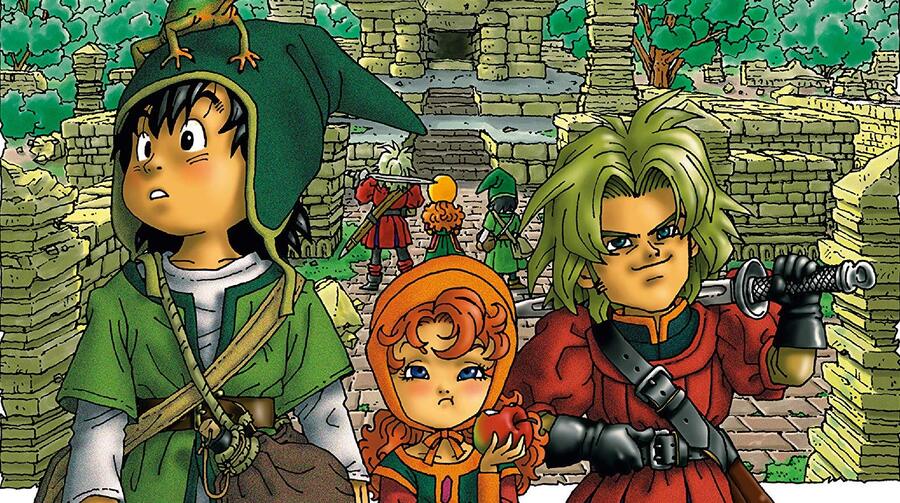
As if the Dragon Quest news wasn't disappointing enough on its own, Nintendo also revealed around the same time that it was moving the development of Zelda 64 to an N64 cartridge (with a 64DD expansion planned for later). Sources speculated at the time that the decision could have been made to try and boost the low sales of the main N64 unit in Japan. But in a 2011 Iwata Asks interview, the Ocarina of Time co-director Yoshiaki Koizumi revealed that the team had also been struggling with the 64DD's slower access speed, resulting in scenarios like Link being unable to move as the disk system tried to retrieve the character's animation data.
Whatever the reason given, the news didn't exactly inspire much confidence in the add-on, with the 64DD having now lost three of its most anticipated titles within the space of a year. Unsurprisingly, given these events, Nintendo decided to delay the release in Japan shortly after, pushing the initial launch window back from late 1997 to March 1998.
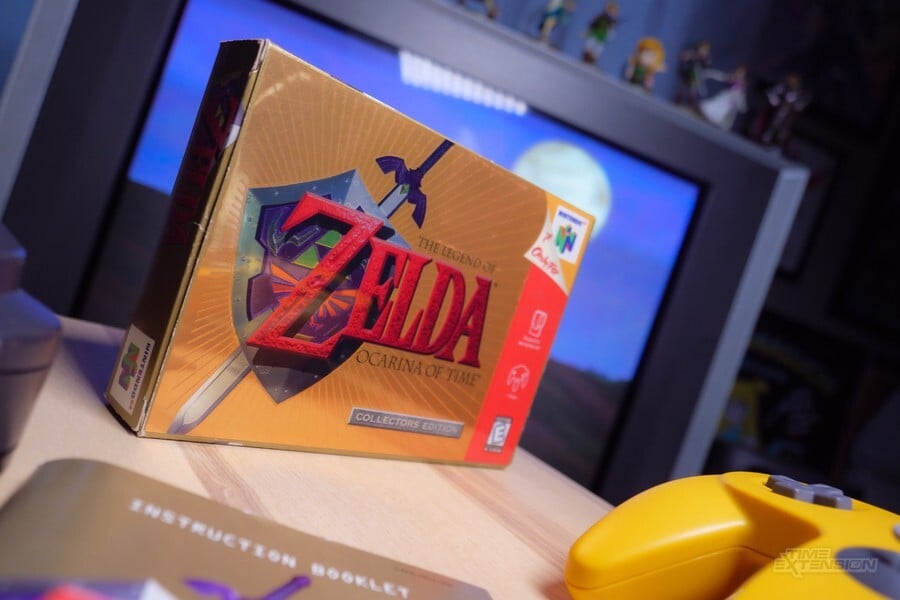
At a press conference, in Japan, in April, the Nintendo spokesperson Yoshio Hongo reassured reporters that, "The hardware [for the 64DD] is completed" but claimed that "software development was behind schedule and we want to ensure that the drive goes on sale with at least four games.”
Elsewhere, Genyo Takeda, the manager of Nintendo IRD (the division responsible for the N64's design) also added credence to this, stating in an interview with Dengeki 64 (as translated by Liz Bushouse): "[The 64DD] is already complete. So if I was told to sell it, I could sell it right now. We people in charge of the hardware and system design still have some work left to improve development tool support. But we’re already set up to mass produce the 64DD. However, it will still take some time to complete software for it."
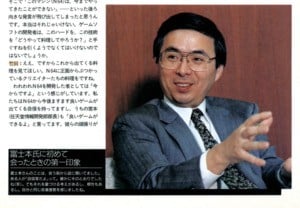
Throughout the year, Nintendo did its best to try to resolve its software issues behind the scenes. In the US, for instance, the company hosted a conference in Seattle for 180 N64 developers, where the lead Nintendo of America engineer Mark DeLoura familiarized people with some of the tools and capabilities of the hardware. Meanwhile, in Japan, the company assigned the Nintendo veteran Takao Sawano (who had previously played a key role in the creation of the Famicom controller and the Famicom Disk System) to help look after the development of the majority of the 64DD games, in order to remove some of the load off the legendary producer Shigeru Miyamoto, who was struggling to find time to devote to projects like Zelda 64.
A new game line-up was also publicly revealed to restore confidence in the add-on, with Mother 3, Pocket Monster 64 (Pokémon Stadium), Sim City 64, and Mario Paint 64 being the four titles chosen to launch alongside the device.
The future was finally beginning to look brighter for the 64DD after a long and challenging year, but then, in November 1997, circumstances forced Nintendo to make yet another embarrassing delay announcement — this time moving the launch of the 64DD to June 1998. This news came shortly before the first-ever Nintendo Spaceworld event (a renamed version of Nintendo's earlier Shoshinkai events), where the 64DD would feature prominently.
Gimmicks & Creativity
At Spaceworld, Yamauchi gave a keynote speech, reflecting on the poor performance of the Nintendo 64 in Japan. Critics at the time had widely attributed this to the lack of role-playing games on the console, but Yamauchi, instead, chose to diagnose it as a sign of a wider cultural shift in the Japanese video game market away from TV-based console games. As a result, he laid out a bold strategy for the future of Nintendo that would hopefully allow the company to "rebuild the market", by expanding the ways that people play games. This was undoubtedly inspired by the phenomenal success of Pokémon on the Game Boy and was set to feature the 64DD at its heart.
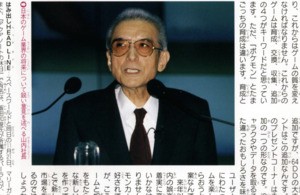
In an excerpt from the speech (published in Famimaga 64 and translated by Liz Bushouse), Yamauchi said: "The domestic video game market is clearly losing steam, so we have to do something about game quality. I think the four keywords for games going forward will be 'training', 'trading', 'collecting', and 'add-ons'.
"'[...] Training' can encompass a wide variety of things, and just because it happens to be a popular game mechanic at the moment doesn't mean that it should be blindly mimicked. For what I mean by 'trading' and 'collecting', using Pokémon as an example, it's connecting with your friends to trade for Pokémon you don't have, filling out your collection. But just collecting alone isn't enough. It's the trading aspect that really makes collecting fun."
With the 64DD and its various types of software, Yamauchi hoped to build an industry where players would be able to transfer data back and forth between themselves, transform "a home console-only game into a portable game" with the use of the Gameboy, and download additional characters and data for N64 games that had already released. This was a mentality that was clearly reflected in some of the products that were on show at that year's event, such as Mario Paint 64 (which had by this point become a suite of interconnected creation tools called Mario Artist: Picture Maker, Mario Artist: Talent Maker, and Mario Artist: Polygon Maker), and 64DD compatible accessories like the Nintendo 64 mouse, N64 transfer pak, and the Game Boy Camera.
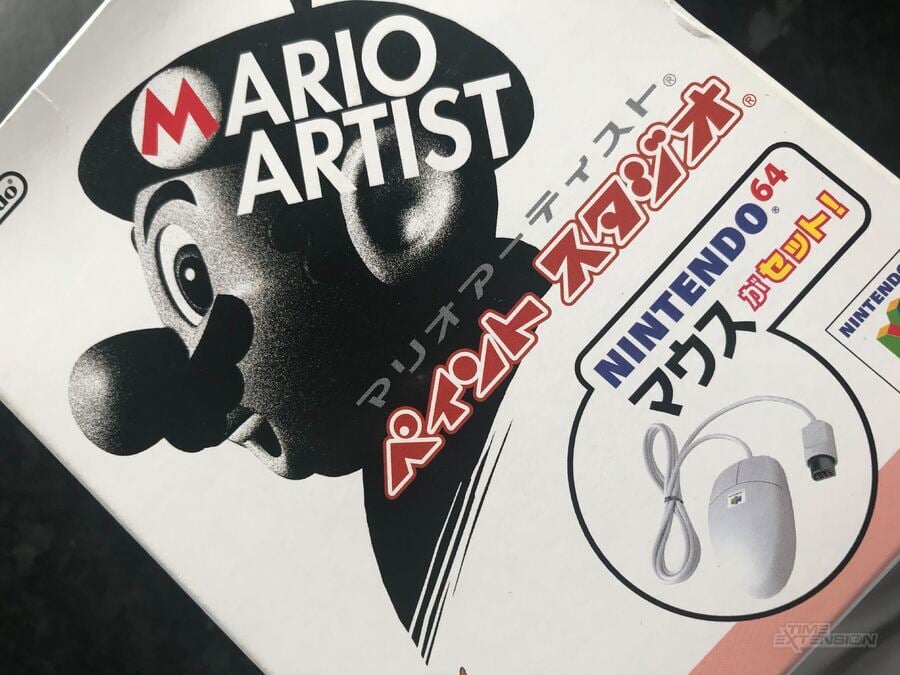
Speaking about this direction in Famimaga 64 Magazine, Miyamoto said, "Interactivity has always been our key focus, really. And also, not just letting the player create, but letting the player enjoy the act of creating itself. That's just the difference between what the entertainment industry as a whole calls "creation/creativity" and the kind of "creation/creativity" present in the work we do."
He continued, "It's all about that ability to express yourself in a way that's fun. For example, I enjoyed drawing comics when I was a kid. And it used to be that people who couldn't draw just didn't pursue drawing, but now even those people can draw, and in fact, it's those kinds of people who possess great talent and artistic sense, so I want to incorporate that into play. Games aren't just for the people who play them. Right now it's more about expanding communication, and not just using controllers, but connecting with different things. That's also one of our key focuses: expansion."
Nintendo seemed to have an exciting vision for the 64DD but in the months following Spaceworld, it was clear that they were still struggling to get the software ready in time. In April 1998, it was confirmed that the add-on had undergone another disappointing delay. Then, throughout the rest of the year, there were also various reports of games that had originally been planned for the 64DD being switched over to cartridge (including Mother 3 and Pokémon Stadium).
The console received a reputation for being "vapourware" in the press, with publications such as Next Generation calling it "as close to 'dead' as we can imagine" after it failed to make an appearance at E3 1998. Then, to make matters worse, Nintendo delayed its annual Spaceworld event at the end of 1998, with the lack of completed 64DD software believed to be the cause.
The Launch of the 64DD
Things were admittedly looking bleak for the 64DD heading into 1999. But then in June 1999, Nintendo announced that it was forming a new company called "Enternet" with Recruit Corp (a Japanese business primarily known at the time for its online recruitment service Recruit Navi) to finally release the long-awaited peripheral in Japan. There was no mention of a US release date, with IGN assuming correctly at the time that Nintendo of America had given up on bringing the add-on to the West.
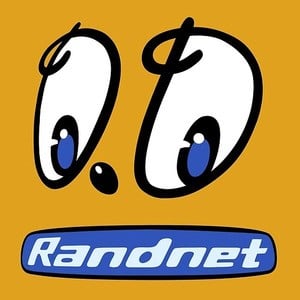
In the announcement (which was written in Japanese), Nintendo talked a bit about how the Internet was changing the relationship between companies and consumers and outlined its intention to use the 64DD as an opportunity to try to replicate the business models of Western businesses like America Online.Inc., Amazon.com, and Dell Computer Technologies, which had already begun distributing products directly to customers online.
The company, which was later renamed to Randnet, planned to do this by releasing the 64DD via a special all-in-one subscription service, with players having to become a Randnet subscriber in order to receive the add-on. To sign up, players could either visit the Randnet website, request a form by fax or phone, or go to a participating store (such as Lawsons) to fill out an application in person, with two different subscription packages being offered. The more expensive of these also came with an N64 and was priced at 3,300 yen per month, while the cheaper option was shipped without and was priced at 2,500 yen per month. Both subscriptions were expected to go down to just 1500 yen per month the following year after the owner had paid off the initial cost of the unit.
Besides the 64DD unit, Randnet subscribers would also gain access to its various network services (email, home shopping, etc), as well as a small collection of titles to get them started. These titles weren't scheduled to be released all at once, but would instead ship to subscribers as soon as they were ready. The Randnet service was expected to launch in December 1999 and was capped at just 100,000 users. The plan was to open the registration window for the Randnet membership on November 11th, 1999, and close it on January 2000 but the cut-off date kept getting pushed back, potentially due to a low amount of interest.
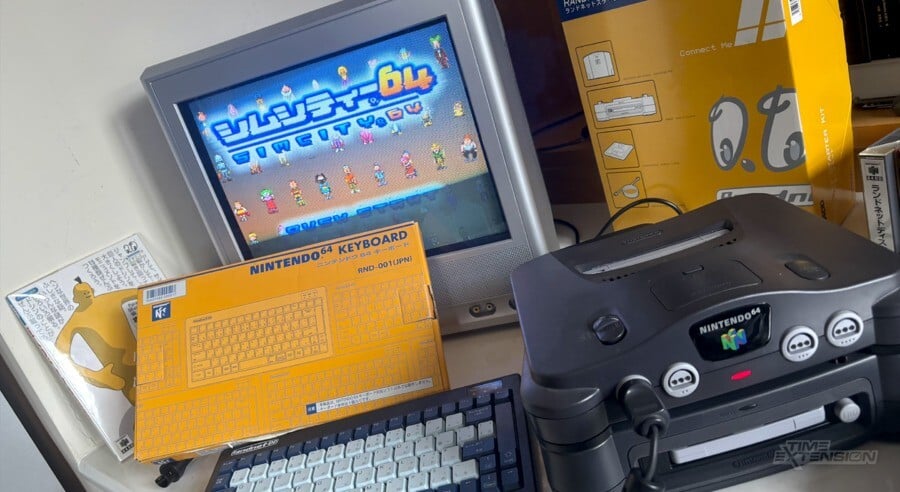
At Spaceworld 1999, Randnet tried to drum up some last-minute attention for the add-on ahead of the 64DD's official release, showing off eight disks that were scheduled to be released for the device. This included Mario Artist: Picture Maker and Mario Artist: Talent Maker (which had been renamed to Mario Artist: Paint Studio and Mario Artist: Talent Studio since their appearance at Spaceworld '97), Sim City 64, an expansion disc for the cartridge game F-Zero 64, Japan Pro Golf Tour 64, Doshin the Giant, a mahjong game, and Gendai Dai-Senryaku: Ultimate War. An additional transfer cable was also shown behind a glass booth, which was believed to be an alternative way of transferring Game Boy data to the 64DD and could be used as a method of turning the handheld into a subscreen.
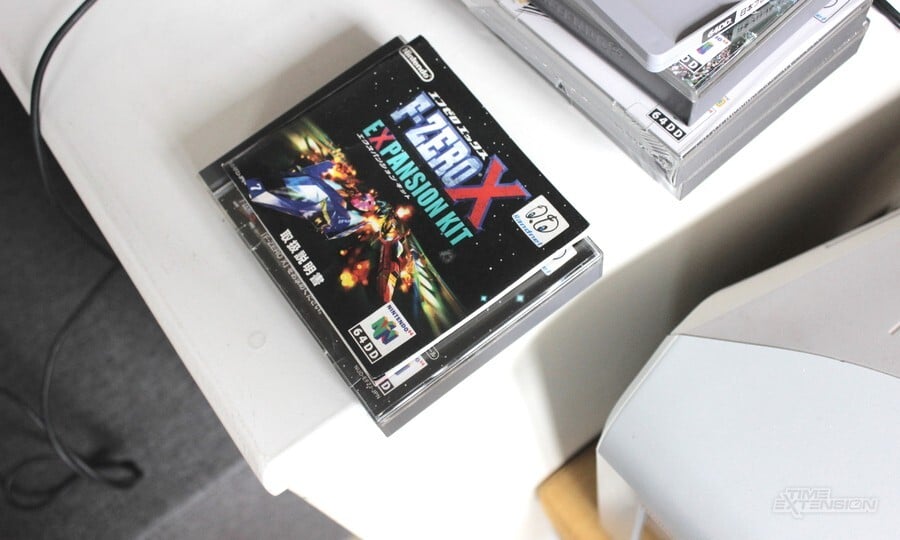
After years of waiting, the 64DD was eventually released in Japan in December 1999, with the first three disks that were expected to ship out to Randnet subscribers being the Randnet Disk, Mario Artist: Paint Studio, and Doshin the Giant. All of these were slated to be released on December 11th, but an issue with the Randnet Disk meant that the online software was delayed to February 2000 and that copies of the Randnet Starter Kit were initially shipped out to customers without the disk.
These problems were eventually ironed out, though, and over the first six months, Randnet ended up releasing a total of 10 disks. These included:
- Mario Artist: Paint Studio (December 11th, 1999)
- Doshin the Giant (December 11th, 1999)
- Randnet Disk (February 23rd, 2000)
- SimCity 64 (February 23rd 2000)
- Mario Artist: Talent Studio (February 23rd 2000)
- F-Zero X Expansion Kit (April 21st 2000)
- Mario Artist: Communication Kit (June 29th, 2000)
- Mario Artist: Polygon Studio (August 29th, 2000)
- Japan Pro Golf Tour 64 (May 2nd, 2000)
- Doshin the Giant: Tinkling Toddler Liberation Front! Assemble! (May 17th, 2000)
The first 8 of these were included for "free" as part of the Randnet Starter Kit, while the remaining two — Japan Pro Golf Tour 64 and Doshin the Giant: Tinkling Toddler Liberation Front! Assemble! — could only be purchased online via Randnet's Get Mall shopping channel and were produced in limited quantities.
It was assumed that Randnet would keep expanding its range of services and software year on year, but at the next Spaceworld in August 2000, the 64DD and its software was nowhere to be seen, with the emphasis instead being placed on the reveal of the Nintendo Gamecube, the Game Boy Advance, and the last remaining N64 games.
IGN64 wrote about the 64DD's absence: "The hardware was not only completely absent from the event but previously scheduled products like Ultimate War and Doubutsu Banchou both showed up in playable form – on cartridge for Nintendo 64. Nintendo did not speak about 64DD during its opening speech, nor did the hardware itself have any booth presence. In fact, the unofficial "No 64DD!" policy seemed to be enforced by Nintendo so brutally that had we even muttered the name of the hardware, we would have probably been tossed out of the show."
Once touted as a key part of Nintendo's strategy, the 64DD now seemed to be on the way out, with no new software being planned for the immediate future. A few months later, in October 2000, Randnet closed the registration window for the subscription service, providing another significant clue that the 64DD's days may be numbered.
The Legacy of the 64DD
On November 22nd, 2000, Randnet finally confirmed the news that it was pulling the plug on the service, informing customers that its online service would be coming to an end on February 28th, 2001, and that no new games would be released. There were a few reasons given for this decision at the time, with the two major ones being the planned release of Nintendo's next-generation GameCube and the inability to keep pace with other network services developed for computers and mobile phones.
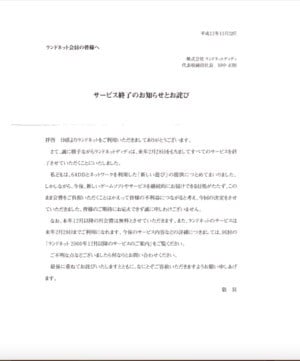
Randnet's president Masanori Tanaka issued the following statement to subscribers on November 22nd, informing them of the decision (as translated for us by Liz Bushouse):
"To whom it may concern,
Thank you for using Randnet. We regret to inform you that as of February 28 of next year, RandnetDD plans to end all services.
We have done our best to offer a new form of play through the 64DD and its network. However, there is no prospect of new games or services coming to the 64DD in the future, so we feel it would be unbeneficial to you all to continue to bear the cost of the membership fee, and thus have decided to end all services. We sincerely regret not being able to meet your expectations.
As of December of this year, we will stop charging a monthly membership fee. And you will continue to be able to use Randnet’s services until February 28 of next year. For more details regarding future service, please consult the “Guide to Randnet Services From December 2000 And On” document that was included in this envelope. Again, we express our sincerest apologies and hope for your understanding in this matter."
In the "Guide to Randet Services from December 2000 and On", Randnet went over when each of the services would come to an end and highlighted all of the available software that would still be able to function following the end of the network. It also claimed that anyone who purchased the N64 keyboard specifically to use Randnet online services could apply for a refund prior to February 28th. Following this, the company did its best to fulfill its obligations to its customers, before being liquidated in 2002.
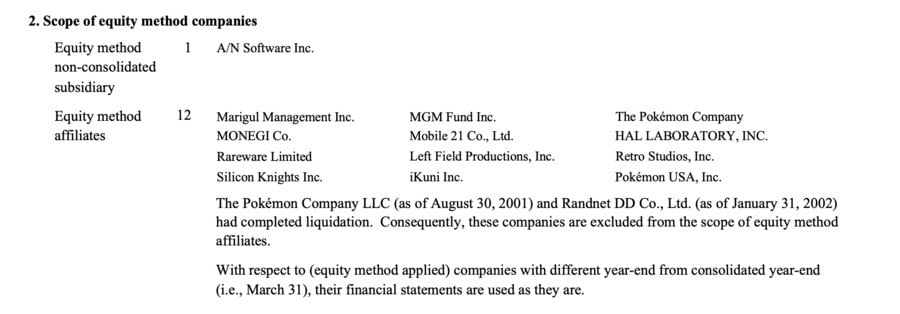
In retrospect, it would be very easy for us to focus entirely on where the 64DD went wrong, but that would also be ignoring some of the surprising ways it influenced Nintendo moving forward. If it wasn't for the 64DD, we likely wouldn't have the WarioWare series, Animal Crossing, Nintendogs, and the Nintendo Miis, with all of these owing a large debt of gratitude to ideas that were originally conceived for the add-on.
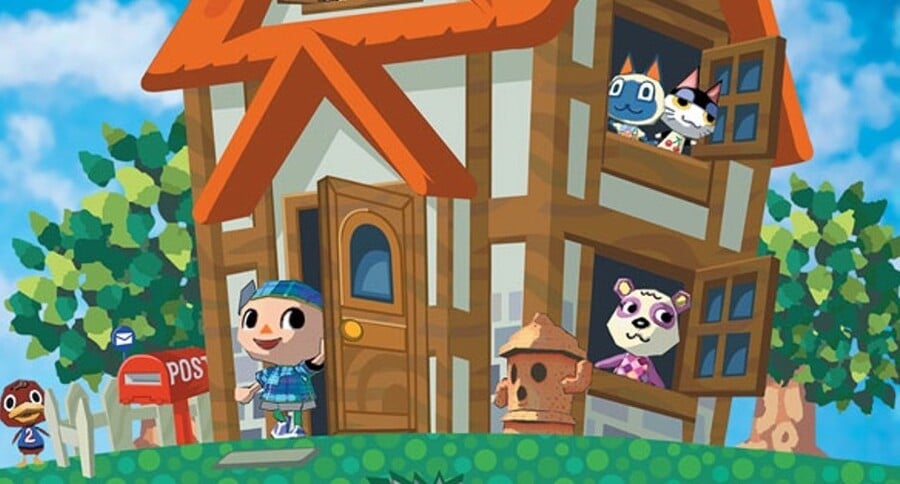
WarioWare, for instance, was originally inspired by the short minigames included in Polygon Studio, whereas Animal Crossing's real-time clock feature emerged from the title originally being slated for release on the 64DD before being moved to a cartridge. Nintendogs, on the other hand, owes a significant debt of gratitude to Shigesato Itoi's lost 64DD exclusive Cabbage, while Nintendo Miis are clearly a successor to Talent Studio's own 3D avatars. With all of this in mind, you could potentially argue that the 64DD was an important stepping stone for Nintendo, providing the company with a blueprint for what the future of its software might look like.
Disappointingly, in the past 20+ years, Nintendo has done very little to revisit this obscure part of its history, with only Param's Doshin the Giant ever being released on another platform in the form of the 2002 Nintendo GameCube port. Because of this, it has mostly been left to a community of collectors and preservationists to help document these games and make them playable again in emulators.
We'd personally love to see Nintendo rerelease some of these titles again on its modern hardware via its Switch Online service, but we're not exactly holding our breath for this to happen anytime soon.

